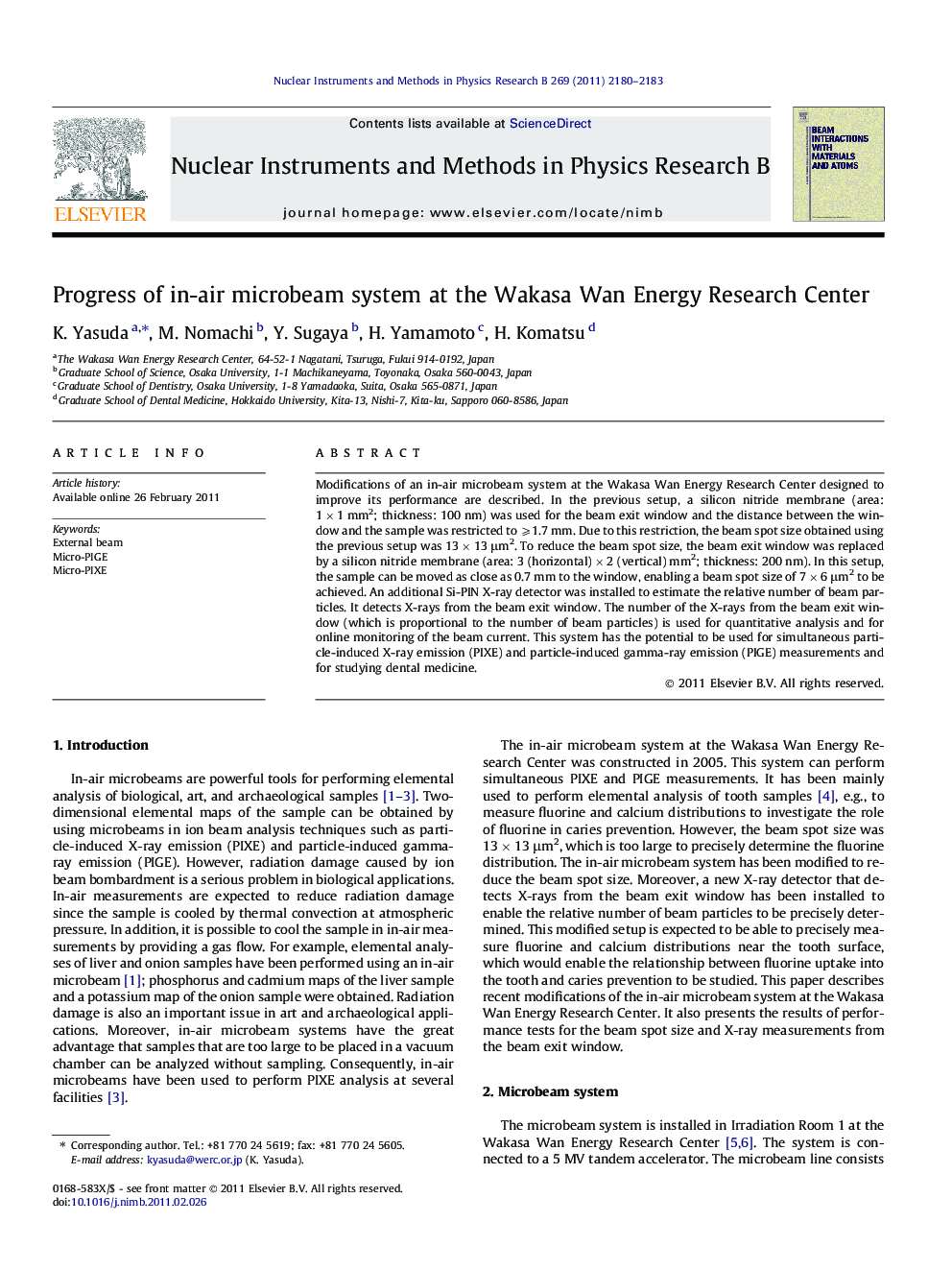| Article ID | Journal | Published Year | Pages | File Type |
|---|---|---|---|---|
| 10674681 | Nuclear Instruments and Methods in Physics Research Section B: Beam Interactions with Materials and Atoms | 2011 | 4 Pages |
Abstract
Modifications of an in-air microbeam system at the Wakasa Wan Energy Research Center designed to improve its performance are described. In the previous setup, a silicon nitride membrane (area: 1 Ã 1 mm2; thickness: 100 nm) was used for the beam exit window and the distance between the window and the sample was restricted to ⩾1.7 mm. Due to this restriction, the beam spot size obtained using the previous setup was 13 Ã 13 μm2. To reduce the beam spot size, the beam exit window was replaced by a silicon nitride membrane (area: 3 (horizontal) Ã 2 (vertical) mm2; thickness: 200 nm). In this setup, the sample can be moved as close as 0.7 mm to the window, enabling a beam spot size of 7 Ã 6 μm2 to be achieved. An additional Si-PIN X-ray detector was installed to estimate the relative number of beam particles. It detects X-rays from the beam exit window. The number of the X-rays from the beam exit window (which is proportional to the number of beam particles) is used for quantitative analysis and for online monitoring of the beam current. This system has the potential to be used for simultaneous particle-induced X-ray emission (PIXE) and particle-induced gamma-ray emission (PIGE) measurements and for studying dental medicine.
Keywords
Related Topics
Physical Sciences and Engineering
Materials Science
Surfaces, Coatings and Films
Authors
K. Yasuda, M. Nomachi, Y. Sugaya, H. Yamamoto, H. Komatsu,
